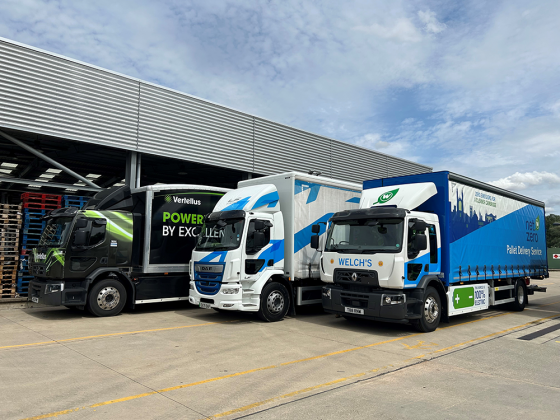The past, present and future of smart motorways

With research citing that accidents and emissions are reduced on smart motorways, Alex Dalton from Northgate Vehicle Hire examines what the future plans are for this technology
A new study by BBC One Show showcased the benefits of smart motorways that has led to several motorways of the kind popping up across our UK roads.
The Highways Agency started using the term ‘smart motorways’ in 2013. The technology behind smart motorways allows each stretch of motorway to actively manage traffic flow, with this technology operated by a regional traffic control centre near to the route. Traffic is carefully monitored at these control centres, whereby officials are able to activate or alter signs and speed limits on the smart motorways in an attempt to always keep traffic flowing freely, whilst remaining within current motorway boundaries to ensure continuation of environmental footprint minimisation.
Tips for driving on a smart motorway
When driving on a smart motorway, first and foremost, never drive in a lane that has a sign with a red ‘X’ over it – this means that the lane is closed. You risk a fine if you remain driving along this lane.
If you see a solid white line between two lanes, this indicates the hard shoulder – you shouldn’t drive in the hard shoulder unless directed to do so.
If you see a broken white line between two lanes, this indicates a normal running lane – you can always drive in these lanes unless you see the red ‘X’ sign overhead.
The current speed limits of the lanes are shown on the gantries above – you should always match that limit.
You should exit a smart motorway as soon as it is safe to do so if your vehicle experiences difficulties, such as a warning light appearing on your dashboard.
When the hard shoulder is being used for normal traffic, you should only use the emergency refuge area (ERA) for an emergency. These are identified by a sign that is blue and features an orange SOS telephone symbol.
If you break down before being able to exit a smart motorway or reach a refuge
area, you must switch your hazard lights on and wait for assistance to arrive.
Are smart motorways effective and safe?
BBC One Show carried out a study to measure how effective and safe these new motorways actually are. The study analysed eleven sections of smart motorway found on stretches of the M1, M4, M6, M25 and M42.
The research revealed there were 52,516 fixed penalty fines issued on these routes in 2015 as a result of drivers exceeding the speed limit. On the same stretches of the motorway between 2010 and 2011, only 2,023 fixed penalty fines were issued for the offence — illustrating a 2,500 per cent increase over the past five years.
The data also allowed the BBC One Show to calculate that the revenue that went to central government has risen from £150,600 five years ago to over £1.1 million last year.
According to Highways England, journey reliability has improved by 22 per cent, personal injury accidents have reduced by more than half, and when accidents did occur, the fatality of those injuries were significantly fewer. This is especially significant to point out for drivers who use roads to get to and from individual jobs – fleet drivers who rely on journey accurate times should benefit from using the smart motorway system.
Are smart motorways the future?
Over 230 miles of smart motorway already stretches across the UK. This number is set to increase with Highways England currently designing many more miles of these routes across the UK. With carbon monoxide and carbon dioxide emissions both reduced by four per cent, as was fuel consumption, it’s no wonder this technology is being rolled out across more routes.
Current smart motorway work includes the route between junctions 19 and 16 of the M1 in the East Midlands is being turned into a smart motorway, with work set to be complete in spring 2017.
The route between junctions 32 and 35a of the M1 in the North of England is being turned into a smart motorway, with work set to be complete in spring 2017.
The route between junctions 2 and 4a of the M3 in the South East of England is being turned into a smart motorway, with work set to be complete in summer 2017.
The route between junctions 4a and 6 of the M5 in the West Midlands is being turned into an ‘all lane running’ smart motorway, with work set to be complete in spring 2017.
The route between junctions 16 and 19 of the M6 in the North West of England is being turned into a smart motorway, with work set to be complete in spring 2018.
The route between junction 8 of the M60 and junction 20 of the M62 in the North West of England is being turned into a smart motorway, with work set to be complete in autumn 2017.
Planned smart motorway work
There is a proposal to develop the route between junctions 23a and 25 of the M1 in the East Midlands into a smart motorway. If granted, the work will begin in early 2017 and is planned to be completed by late 2018.
There is a proposal to develop the route between junctions 3 and 12 of the M4 in the South East of England into a smart motorway. If granted, the work will begin in spring 2017 and is planned to be completed by spring 2022.
There is a proposal to develop the route between junctions 13 and 15 of the M6 in the West Midlands into a smart motorway. If granted, the work will begin in spring 2018 and is planned to be completed by spring 2020.






